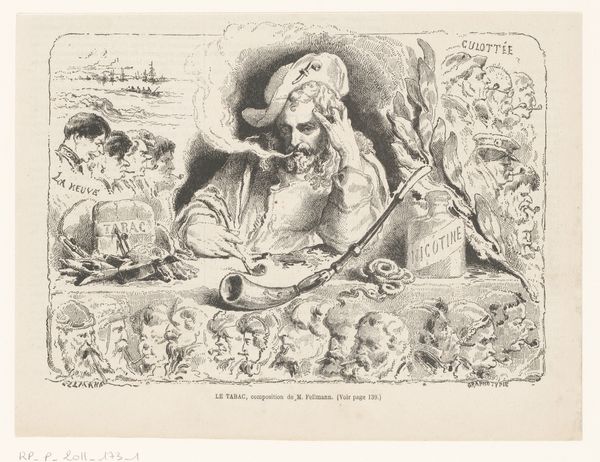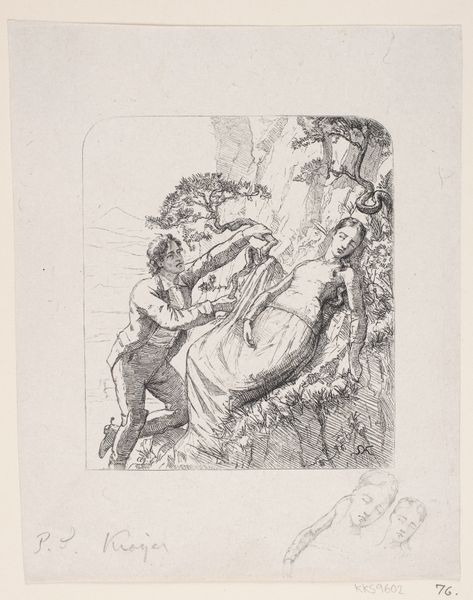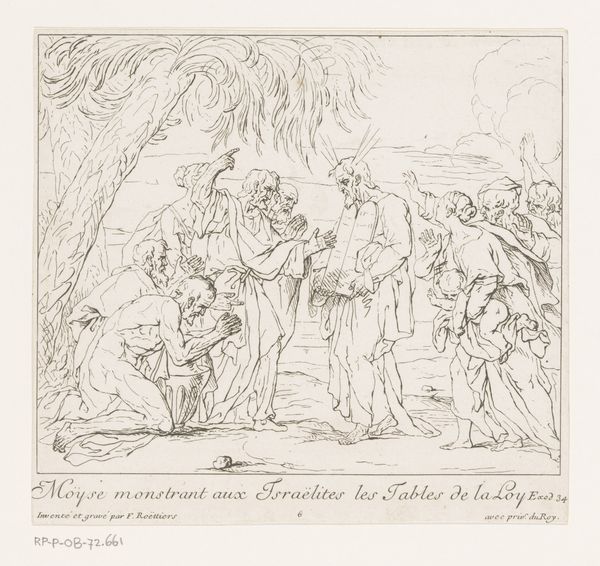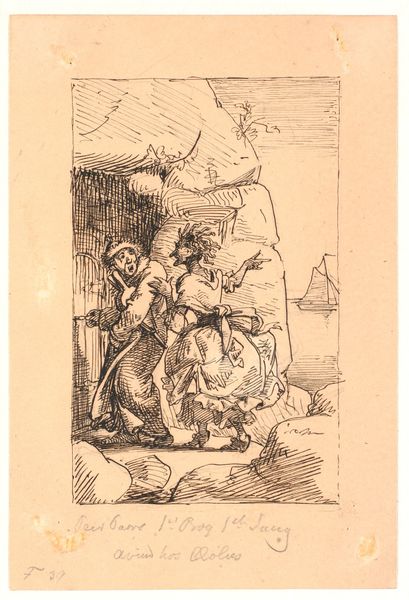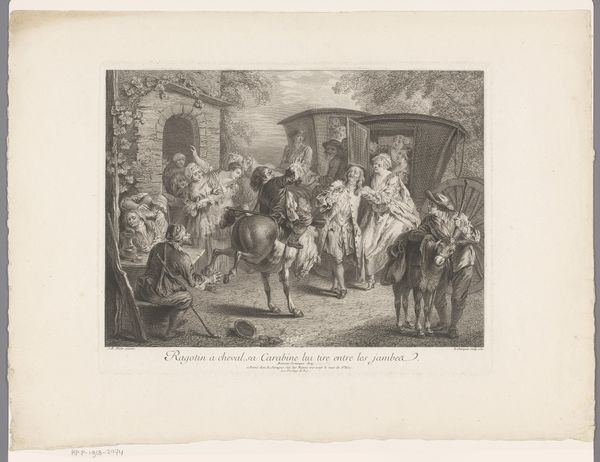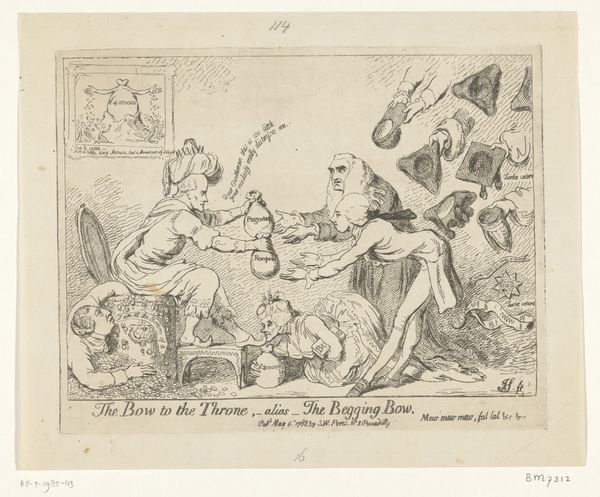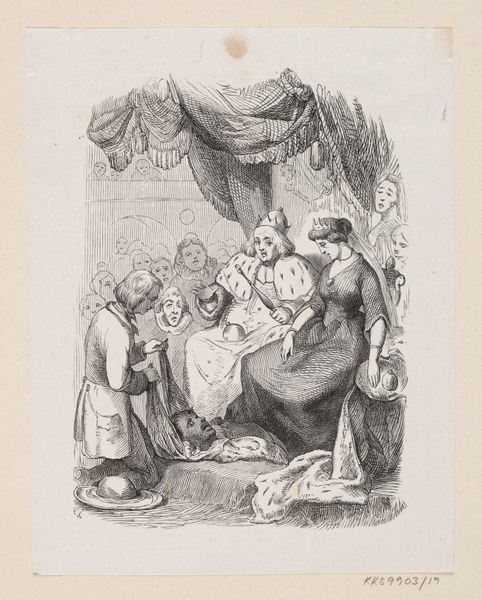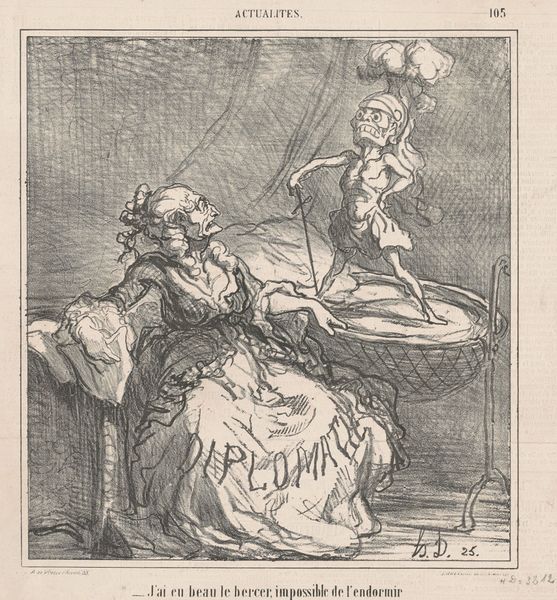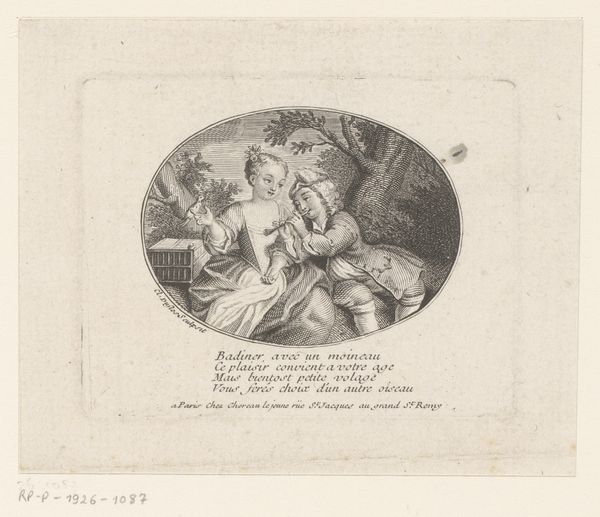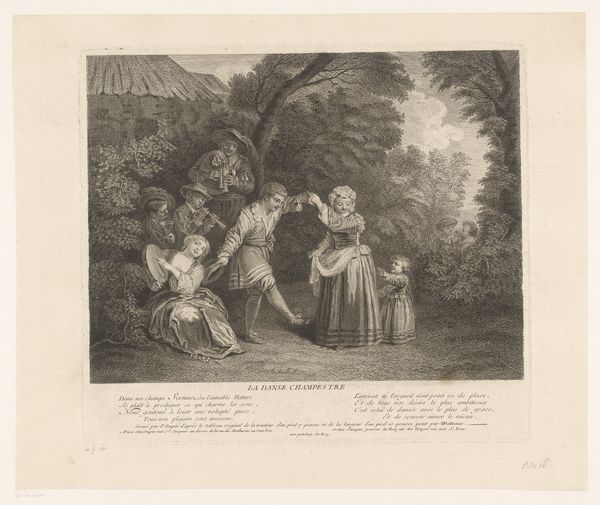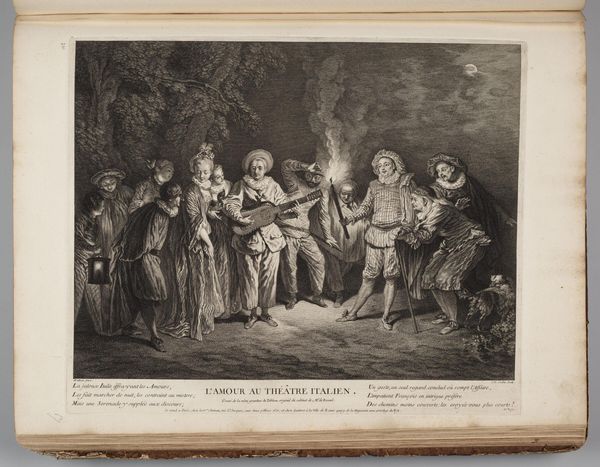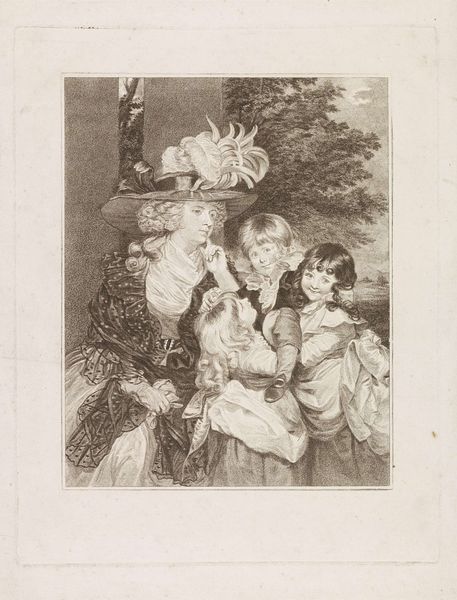
drawing, print, etching
#
drawing
# print
#
etching
#
caricature
#
figuration
#
romanticism
#
line
#
genre-painting
Dimensions: Sheet: 7 5/8 × 8 3/8 in. (19.4 × 21.2 cm)
Copyright: Public Domain
This print, The Turkish Corn Cutter, was etched by B.F. Scott in the late 18th or early 19th century. It’s a relatively simple print on paper, achieved through the labor-intensive process of etching. The image depicts a scene of a man tending to someone's foot, likely removing a corn. The fine, detailed lines that define the figures and the tent backdrop were achieved by coating a metal plate with wax, drawing through it to expose the metal, and then immersing it in acid. This etches the design into the plate, which is then inked and pressed onto paper. Consider the social context: prints like these were relatively accessible, a form of visual communication consumed by a broad audience. The labor of the printmaker, and the implied consumer, speaks volumes about social class. The choice of subject matter also hints at a fascination with other cultures, even if filtered through a Western lens. Ultimately, this print serves as a reminder that every artwork is the result of material choices, skilled labor, and a specific historical context. By recognizing these factors, we can appreciate the full meaning of the artwork.
Comments
No comments
Be the first to comment and join the conversation on the ultimate creative platform.
